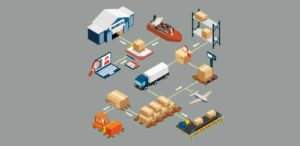Customer satisfaction is the top priority for any large e-commerce business or business starting from the ground. Customers are happy when they get their favorite products quickly and without damage.
However, managing the supply chain is quite challenging when expanding your business. You even have to spend more money to manage the supply chain.
Additionally, If you make any mistakes in the supply chain, it adversely affects the customer. It may reduce your business growth. In worse cases, you may face business loss.
Hence, more e-commerce businesses often use third-party logistics providers’ help to alleviate problems. Growth in sales and increased customer demand for products and services have raised the demand for third-party logistics services.
3PL storage companies such as Akash Storage and Distribution Services Pvt. Ltd which is one of the best 3PL companies in Mumbai have adopted innovative solutions and eco-friendly practices, leaving a green footprint on the logistics chain.
It has been managing logistics for 23 years. They have expertise and years of experience delivering products to customers promptly.

What Is Third-Party Logistics?
The third-party logistics provider provides supply chain operations like warehousing, packaging, transportation, and order fulfilment for any business.
Imagine you are running a small business that sells handmade candles. You store all the handmade candles in your garage and then sell them to customers.
But whenever your business grows, you need to produce more handmade candles. Your garage does not have enough space to keep all the handmade candles. You even have to give handmade candles to customers in good condition and at the right time.
It’s not possible to handle everything alone. You can take the help of a third-party logistics provider.
The third-party logistics will store your inventories. Whenever a customer buys candles online, the third-party logistics provider will pick them up from the warehouse, pack them properly, and ship them to the customer.
If the customer returns the candle, the third-party logistics provider will process the return and send the candle back to you.
The third-party logistics provider helps to maximize the speed and efficiency of the supply chain management. It gives you enough time to concentrate on your business and marketing products.

What Is 3PL?
The exponential growth of business has raised the demand for supply chain management. The increase in demand for products and services has even created a demand for large warehouses, optimized transportation routes, and delivery of products within time.
3PL means third-party logistics. It specializes in handling the logistics needs of any e-commerce business or company. The 3PL frees you from the complexities of warehouse management and managing staff.
They have highly experienced warehouse employees who will receive and organize your products. They even pick items, pack them securely, and deliver them to the customers.
The Third-party Logistics Process
When you are new to hiring a third-party logistics company, it may be daunting and expensive. But in reality, it is not so. For instance, Akash Storage and Distribution Services Pvt. Ltd is the best 3PL company in Mumbai. You can hire them and get free from the tension of supply chain management of your business. Consequently, you can focus more on your business goals and marketing.
Your products are shipped directly from the factory to a third-party logistics warehouse when you wish for outsourcing. E-commerce businesses often take the help of 3PL providers to streamline their supply chain operations, lessen costs, and improve efficiency.
We are listing down the third-party logistics process.
- Inventory Management
Akash storage and distribution services Pvt. Ltd is one of the best 3PL logistic companies in Mumbai.
Whenever you hire them, you don’t need to take care of inventory management. It has warehousing in Mumbai, which utilizes energy-efficient systems like solar panels and rainwater harvesting systems.
These systems will help reduce costs and lessen the carbon footprint.
Akash storage and distribution services Pvt. Ltd has experts who will manage your stock. It has warehouse management software that helps to identify where the product needs to be stored. It manages and optimizes the entire warehouse operations.
- Picking
The next step is picking. It is the step where the actual 3PL process begins. Whenever a customer orders on any sales channel, it is sent to the warehouse, where the seller’s inventory is usually stored.
The expertise in 3PL logistics company will identify the product and then pick it up from the storage.
- Packaging
The products are then prepared for packaging. The third-party logistics Company will contact the seller about the packaging during the initial stage to identify the best way of packaging the product.
It ensures the products of the seller are packaged securely and are presentable. Simultaneously, the packaging needs to be cost-effective.
- Shipping
Shipping is the most complicated and expensive part of the entire process. The packaging products are picked by career and out for delivery.
A whole truckload (FTL) is usually utilized to deliver more items or products from the seller. Your shipments are the only goods in the truck moving to the destination.
However, in partial load trucks (PTL), there are shipments of goods from various businesses that fill the entire truck.
Both FTL and PTL are important in logistics and give you the option of transporting products from the warehouse to the delivery centre.
- Reverse Logistics
3PL logistics company even offer reverse logistics. If the customer dislikes the product, they will return it. The workers of 3PL company will check the returned items and ensure they are arranged. They will pick them up and put them back on the warehouse shelves.

Conclusion
Is your business growing? Do you want to hire a third-party logistics company to manage the supply chain and deliver products to customers promptly?
Logistics is an essential function in business. Akash storage and distribution services Pvt. Ltd is a 3PL company in Mumbai. It understands the business strategy and does inventory management properly.
It coordinates and collaborates with various service providers. You can contact them to pick up, package, transport, and deliver the products to customers at the correct time.


































